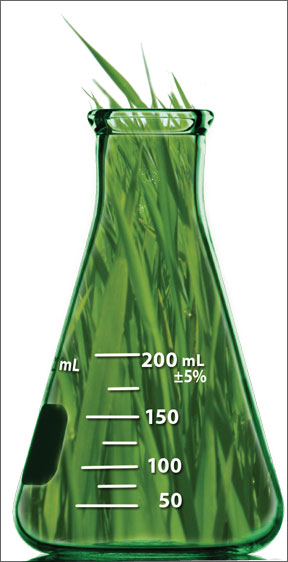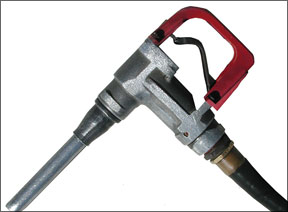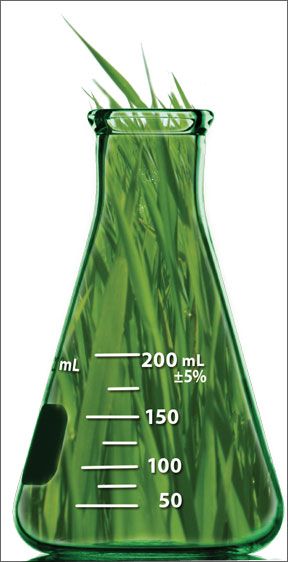The worry about 100LL is less when it will disappear than how many more stories you’ll have to endure predicting its imminent demise. We started in 1984, first warning of the air quality issue followed by the impending loss of the lead additives, which we predicted was just around the corner. Next, it was the refiners-there wouldnt be enough to make the stuff. Then all the states would run leaded fuel out of town or the truckers wouldnt truck it. It was always something.
Yet, there it still is: Genuine 100LL at your local airport. Its at least available, even if it isn’t cheap. But we swear, the stuff is going to go away and this time we mean

it. The latest threat is simple economics: Declining demand may soon render avgas not worth the bother of blending, at least for some refiners. (Check back in 2015 to see how this prediction works out.)
Next up as a would-be replacement is an intriguing new product that surfaced last summer called Swift Fuel-Swift being the name of the start-up company that proposes to develop the process to produce it. While other pretenders to the 100LL throne have come up short octane wise or just havent proven practical, the initial take on Swift Fuel is just the opposite. Initial tests show that it has the octane punch required to keep detonation-prone turbocharged engines from exploding, it burns cleanly, has no toxic lead and-get this-its a renewable biofuel that the inventors say can be made for $2 a gallon.
If this sounds like one of those too-good-to-be-true business schemes pitched on the cable channels, it might not be. Swift Fuel is a serious industrial research program whose claims at least pass the initial smell test. But there are some niggling details that, if not show stoppers, could sprinkle a little sand in the gears.
What Is This Stuff?
Swift Fuel touts itself as renewable biofuel, or what one petrochemical chemist we know calls, “an ethonalish type product.” But its not ethanol by any means. According to our interpretation of Swifts filed patents-reviewed for us by a petrochemical engineer-Swift proposes to produce what can be described as a basic oxygenate-based fuel derived from cellulosic biomass, as opposed to starch or food-based material. In other words, its not corn-based ethanol.
As shown in the flow chart at right, Swift proposes to use cellulosic biomass such as switchgrass and related plant matter and turn it into a high-octane fuel through a proprietary process. The patent language is sufficiently iffy to suggest Swift may have various ways of doing this, but the principles seem discernible.
As described in the Swift patents, the process begins by treating the plant material with an acid spray to break down the complex sugar compounds into something that bacteria can chew on to ferment into oxygenates. There are other ways of doing this, including enzymes and various chemical treatments. Presumably, Swift will experiment in the pilot-plant stage to determine which method is the most efficient. And efficiency is critical if this process is to be sustainable and profitable. Because handling large volumes of biomass and letting the stuff stew in a fermenter is slow going, throughput in biofuels is a major challenge.
Swifts fermentation process produces butanol and acetone. Butanol is a primary alcohol and is itself a potent fuel that some consider superior to ethanol, with higher heat content than ethanol. Its used as a gasoline oxygenate, but because yields from biomass are lower than ethanol, it hasnt gotten much of an economic push. Most butanol is made from petroleum.
Acetone is of the ketone family and used as a solvent for paints and varnishes and in plastics and synthetic fibers. If youve smelled nail polish remover, youve smelled

acetone. Its flammable, but its not considered a fuel.
Swifts plan would relegate butanol to a co-product not related to fuel production and it would be sold at market value. The acetone would serve as a feedstock to produce two other chemicals: isopentane and mesitylene. A still-to-be-addressed part of the technical challenge is economically separating these desired products from the poorer performing byproducts and driving yield to favor the desired chemicals. These two materials are then combined to form Swifts high octane fuel which, for research purposes, appears to exist in three grades: 702, 703 and 704.
Its perfectly feasible to make this fuel in the lab by buying and blending the components in the correct ratios, yielding what chemist Ed Kollin calls the “$65 gallon of avgas.” In fact, thus far, only laboratory samples of Swift Fuel have been produced. But if there’s anything encouraging on the fuels front, its that Swift Fuel seems to deliver on performance claims.
FAA Tests
The FAAs Hughes Technical Center recently tested Swift Fuel and released a detailed report on the results in mid-January 2009. The FAAs Dave Atwood oversaw power and detonation tests in two Lycoming engines-the IO-540-K and the detonation-prone TIO-540-J2BD. The agency also had analytical testing done to determine if Swift Fuel meets the ASTM D 910 fuel standard. It largely meets the standard, but would require some minor modifications to industry specs, which appears doable to us.
According to the FAA report, Swift 702 fuel has a 13 percent higher heat content than run-of-the-refinery 100LL. While typical 100LL ranges in the 102 to 103 MON octane range, Swift Fuel tested at 104.4, meaning that it provided slightly better detonation margins than 100LL. This is a significant development given that other 100LL replacements have struggled to pass detonation testing. There’s evidence that Swift Fuel is somewhat slower burning than 100LL, according to cylinder pressure data developed in the FAA testing. Peak cylinder pressures were as much as 100 pounds lower than 100LL at like power and ignition advance settings. The testing also revealed EGTs 50 degrees higher than 100LL, partly because of the fuels high aromatic hydrocarbon content-it releases 13 percent more heat during combustion per unit of air consumed. One advantage of the higher energy content is that you’ll burn volumetrically less of Swift Fuel for the equivalent power output-about 8 percent, according to the FAA. In a 10-gallon-per-hour airplane, thats worth .8 gallon per hour, which isn’t in exactly trivial, in our view.
For as good as the Swift Fuel appears to be, petrochemical experts caution that all weve seen so far are lab tests of lab-made fuel. Real production-grade fuel-with whatever impurities happened to be entrained-will need to do at least as we’ll if Swift fuel is to remain technically viable.
One downside of Swift Fuel is that a gallon of it weighs a full pound more than 100LL. Thats not trivial, either. In a 75-gallon capacity airplane, the higher fuel weight might be the typical weight of the baggage or even a smallish passenger. Because of its higher heat content and demonstrated lower fuel burn, you can theoretically down fuel to balance payload against range. However, if you down fuel on an equivalent weight (not gallons) basis, range will suffer slightly.
Economics
The critical question isn’t whether Swift Fuel will perform as a transparent replacement for avgas, but whether it can be produced economically and profitably. We think initial testing by the FAA (and others) shows that Swift Fuel will perform as we’ll as or better than 100LL with no need for engine modifications. However, Swift Fuel doesnt precisely meet the ASTM D 910 avgas requirement with regards to distillation end point requirements for some components in the fuel.
The overarching question is what will Swift Fuel really cost to produce? And how will it fit into the avgas distribution network? Chemically, it has one significant advantage: It contains no lead and thus there’s no need to segregate and limit it to specialized truck and rail transport. It should be shippable via pipeline, which 100LL generally isn’t, with only one exception that we know of. Transportation of avgas is a significant factor in its cost at the pump, but the larger driver is that its a boutique fuel sold at boutique prices that arent nearly as competitive as is auto gas. Refiners don’t make much of it and theyre all but free to charge what the market will bear.
In a technical presentation to the Coordinating Research Council, an industry research clearing house, in April 2008, Swift outlined a set of performance claims for its fuel that have been broadly confirmed by the FAAs testing. It also established a timeline that envisions the all-critical pilot plant and scale testing of Swift Fuel production sometime during 2009.
But the real stunner in Swifts report to the CRC was a projected manufacturing cost of $1.80 per gallon or, by Swifts estimate, less than half the retail cost of petroleum-based avgas. The per gallon price has since been revised to $2.
The product would be called Swift 100 and would be a direct replacement for avgas. That price is the refinery out cost, less taxes and transportation costs. Add another 50 cents (at least) for taxes and another $1 for transportation, handling and storage cost, plus 50 cents to a buck for the FBO and you have avgas at $4 to $4.50, or about what it costs in the spring of 2009.
In our view, thats a reasonably credible number, although we predict its on the low side, given the considerable capital costs required to tool up for a biofuel on this scale. We also think it overestimates the efficiency of production, which the ethanol industry has consistently done. Although Swift Fuel isn’t ethanol, the ethanol industry is similar enough to use it as an example. Further, during the past five years, the corn-based ethanol industry has expanded explosively, so its fair to surmise that its production costs benefit from large-scale experience.
So charged is the ethanol industry with the politics of subsidies and environmentalism, that finding a reliable per-gallon ethanol production cost is all but hopeless. We found estimates as low as $1.10 per gallon and as high as $4. In 2005, a U.S. Department of Agriculture survey found an average production cost of corn-based ethanol of $2.53 per gallon, with subsidies in place. Without the subsidies, the cost is higher. The subsidy is between 50 cents and $1 per gallon.
Further, the biomass/cellulosic industry isn’t nearly as developed as the starch-based industry and because of additional production complexity, biomass ethanol is more expensive to manufacture. When certain scale effects kick in, it may become cheaper due to cellulosics higher yield per ton of material.
Of course, that material has to be collected and transported to some sort of processing facility, which is one of several expensive aspects of biofuel production.
Swifts John Rusek told us one possible production and distribution model is a regional network of six or seven renfineries producing and shipping regionally. He says some airports have expressed interest in constructing their own on-airport refineries, but its hard to see how that pencils out. In biofuels, economy of scale is critical for competitive pricing.
As for transportation, another idea is to liquify the crop near the harvest point, then transport the liquid via truck or rail to the biofuel refinery. This a process more akin to crude oil handling.
The more daunting challenge is how $2 Swift avfuel relates to the petroleum market. Because gas prices are relentlessly driven by commodity pricing, there’s virtually no chance that an avfuel priced significantly below avgas or mogas will be allowed to stay that way.
Market forces will drive it to some level price or, if the fuel is chemically exceptional, refiners will buy every drop of it for use as a blendstock for other products. Refineries work to thin margins and are constantly on the prowl for cheaper oil and components, even if pennies cheaper.
When asked about this, Swifts Rusek says one solution is to place Swift Fuel in an agricultural rather than a petroleum distribution network, thus isolating it from oil price pressure. But this may be easier said than done, given the high production costs of biofuels. Oil swings wildly in value, but petroleum-based fuel production costs are likely to be we’ll below biofuel production costs for the foreseeable future.
Conclusion
In our view, Swift Fuel appears to be the real deal, conceptually at least. It has the required octane to replace 100LL and given the state of biomass technology, it looks producible, eventually, if not immediately. The cellulosic fuel industry isn’t nearly as we’ll developed as is the starch ethanol economy. But call us skeptical of the proposed economics.
If Swift estimated the wholesale cost of this fuel at about $3 to $4, it would be more credible, in our estimation. That would keep it sufficiently price separated from motor gas to keep it from being scavenged by the refinery trade and would, of itself, be an achievement.
Our view is that the first priority is to demonstrate that an unleaded piston fuel can be made with sufficient octane to meet detonation requirements. Swift has done that. It would be terrific if that fuel costs less than 100LL does now, but given the laws of physics and economics, that doesnt seem likely.
Last summer, we thought we had exited the era of cheap oil, but here we are again looking at $40 oil. Biofuels in general havent been competitive with oil costing twice as much. Avgas may be unique for its high octane requirement and thus might actually support a competitive footing with petroleum-based fuel. Swift will have to prove that.
Next best is a fuel that costs as much as or a little more than avgas with enough profit in it to be sustainable for the long term. As the sun sets on tetraethyl lead-no really, its going to-Swift may be a viable choice.
Paul Millner and Ed Kollin assisted with the preparation of this article.





